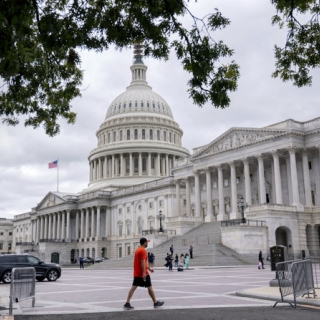


The bottom line: The release of official US data is delayed because the federal government is currently in shutdown. While the budget hasn't been passed, the Antideficiency Act prohibits federal agencies from spending funds—including on statistical activities—so the publication of non-essential data must be temporarily halted. That's why reports like the non-farm payrolls (NFP), weekly jobless claims, CPI, retail sales, PCE, and even GDP releases could be delayed.
The shutdown began Wednesday, October 1, 2025, after a funding impasse in Washington. The impact is immediate: the monthly employment report, which was supposed to be released on Friday, is in danger of not being released, as are weekly jobless claims—authorities have already confirmed the delay if funding isn't restored.
AP News
Technically, many key releases originate from agencies under the Department of Labor (BLS) and the Department of Commerce (through the BEA & Census Bureau). In the event of a lapse in appropriations, they furlough and withhold publication until new funding authorization is granted; this is also reflected in the DOL's official contingency plan.
What's still on track? Some statistics published by the Federal Reserve (a separately funded institution) continue to be limited, but overall data visibility is shrinking, making it difficult for policymakers, market participants, and analysts to accurately assess labor and inflation conditions until the government reopens and releases are rescheduled.
Source: Newsmaker.id
Initial jobless claims in the United States reached 232,000 for the week ending October 18, according to data from the US Department of Labor website. This represents a slight increase compared to the...
The global geopolitical situation is once again showing signs of escalation, particularly in the Asia-Pacific region. A ship collision between the Chinese Coast Guard and the People's Liberation Army ...
Most big emerging economies, including China, Brazil and India, can weather U.S. tariffs without excessive pain, a study by risk consultancy Verisk Maplecroft showed, raising doubt about the clout of ...
Even as a U.S.–China trade truce appears to be holding, analysts caution that the détente remains fragile in a rivalry increasingly defined by strategic competition. A flurry of decisions, outlined i...
The U.S. Senate is expected to hold a test vote on a spending bill on Sunday evening to end the longest ever U.S. government shutdown, with ABC News reporting that enough Democrats now supported the m...
Silver steadied around $51 as markets digested the Fed's October minutes which revealed a divided committee. Many officials still expect cuts at some point but a large group signalled that a December move is not certain, and that pullback in near...
US stocks finished higher on a volatile Wednesday session, reversing some of the sharp selling from the prior four sessions as markets digested a divisive Fed minutes release and awaited Nvidia's earnings after the close. The S&P 500 rose 0.4%...
A divided Federal Reserve cut interest rates last month even as many policymakers cautioned that lowering borrowing costs further could risk undermining the fight to quell inflation that has been above the U.S. central bank's 2% target for four and...
 Asian stock markets opened cautiously at the start of the week, with the MSCI Asia Pacific index rising slightly by 0.2%. The Kospi led the gains,...
Asian stock markets opened cautiously at the start of the week, with the MSCI Asia Pacific index rising slightly by 0.2%. The Kospi led the gains,...
 European markets opened lower on Tuesday (November 18th) as global markets weakened amid renewed concerns over AI-related stocks.
The pan-European...
European markets opened lower on Tuesday (November 18th) as global markets weakened amid renewed concerns over AI-related stocks.
The pan-European...
 Federal Reserve Vice Chair Philip Jefferson said on Monday the U.S. central bank needs to "proceed slowly" with any further interest rate cuts as it...
Federal Reserve Vice Chair Philip Jefferson said on Monday the U.S. central bank needs to "proceed slowly" with any further interest rate cuts as it...
 On Tuesday morning, November 18, 2025, sentiment on Asian markets remained cautious following a sharp decline on Wall Street and concerns about the...
On Tuesday morning, November 18, 2025, sentiment on Asian markets remained cautious following a sharp decline on Wall Street and concerns about the...